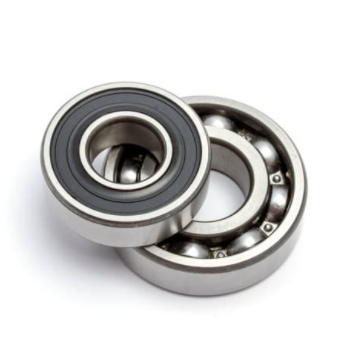What Is A Bearing And How Does It Work?

A bearing is a device that allows two surfaces to move relative to each other while minimizing friction. Bearings are an essential part of many types of machinery and equipment, and they are used in everything from automobiles to aircraft. There are two main types of bearings: rolling-element bearings and plain bearings. Rolling-element bearings use rolling elements (balls or rollers) to minimize friction, while plain bearings use sliding contact between the surfaces. Bearings are usually classified according to the type of load they can support, their operating speed, and the environment in which they are used.
What is a bearing?
A bearing is a machine element that constrains relative motion between moving parts to only the desired motion, and reduces friction between moving parts. The design of the bearing may, for example, provide for free linear movement of the moving part or for free rotation around a fixed axis; or, it may prevent a motion by controlling the vectors of normal forces that bear on the moving parts.
A bearing is a device that is used to enable rotational movement or reduce friction between moving parts. Bearings are designed to support and guide mechanical components as they move, and help to keep these components aligned. There are many different types of bearings, each with their own unique applications and benefits.
A bearing is a machine element that typically supports another moving machine element, such as a shaft, axle, or wheel. The purpose of a bearing is to reduce friction between the moving parts it supports, and to guide and control motion. Bearings are classified according to the type of load they support, their operating conditions, and the shapes of the inner and outer race surfaces.
The most common type of bearing is the rolling-element bearing. In this type of bearing, the load is transmitted through hardened steel balls or rollers that rotate between an inner ring (called the cup) and an outer ring (called the cone). The rolling elements are separated from each other and from the inner and outer rings by metal cages or retainers.
Rolling-element bearings can support both radial loads (the weight of the shaft being supported) and thrust loads (the force exerted by a rotating member on another part). Radial ball bearings are the most common type of rolling-element bearing. They can accommodate both radial and thrust loads, but they are not suitable for high-speed applications because the balls can start to “skate” on the races at high speeds. Thrust ball bearings can only support axial loads, but they are designed for higher speed applications than radial ball bearings.
Roller bearings are another type of rolling-element bearing. They can support higher radial loads than ball bearings because they have cylindrical rollers instead of balls. However, roller bearings
Different types of bearings
There are many different types of bearings, each with their own unique applications and benefits. The most common type of bearing is the ball bearing, which is used in a wide range of applications. Ball bearings are designed to handle both radial and thrust loads, and can be found in a variety of sizes.
Other common types of bearings include roller bearings, sleeve bearings, and tapered roller bearings. Roller bearings are designed to handle primarily radial loads, while sleeve and tapered roller bearings can accommodate both radial and thrust loads. Each type of bearing has its own advantages and disadvantages that should be considered when choosing the best bearing for a particular application.
There are several advantages and disadvantages to bearings. On the plus side, bearings can help reduce friction between two objects, which can make them move more smoothly. They can also help support heavy loads and keep moving parts aligned. However, bearings can also be a source of noise and vibration, and they require regular maintenance.
There are many benefits to using bearings in machinery and equipment. They allow for smooth and efficient operation while reducing wear and tear on other components. However, there are also some disadvantages to using bearings that should be considered before making a decision to use them.
The main advantage of bearings is that they reduce friction between moving parts. This allows for smoother operation of the machinery and results in less wear and tear on other components. Bearings also tend to have a long lifespan, which reduces maintenance costs over time.
However, there are some disadvantages to using bearings as well. They can be expensive to purchase and install, and if not properly maintained, they can cause problems with the machinery. In addition, if a bearing fails, it can cause serious damage to the equipment.
How to maintain your bearings
There are three main ways to maintain your bearings:
1. Regularly check the bearing for wear and tear.
2. Keep the bearing clean and free of debris.
3. Lubricate the bearing regularly.
Assuming you are referring to ball bearings, which are the most common type, there are three main ways to keep them in good condition:
1) Regularly clean the bearings and their surroundings. This includes removing any dirt, grit, or grime that has accumulated on them. You can use a brush or compressed air for this.
2) Occasionally inspect the bearings for wear and tear. If they show signs of damage, replace them immediately.
3) Lubricate the bearings regularly. This helps to reduce friction and prevent wear and tear. Use a high-quality lubricant specifically designed for ball bearings.
Conclusion
If you have ever wondered what a bearing is and how it works, then this article is for you. We have provided a simple explanation of what a bearing is and how it works, as well as some examples of common types of bearings. Bearings are an essential part of many machines and devices, so it is important to understand how they work. We hope that this article has helped you to do just that.

















